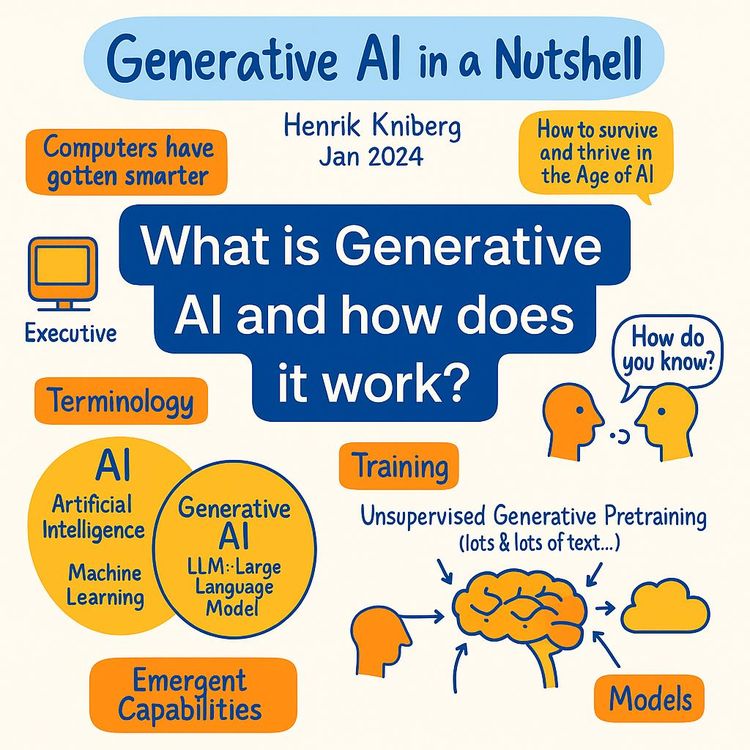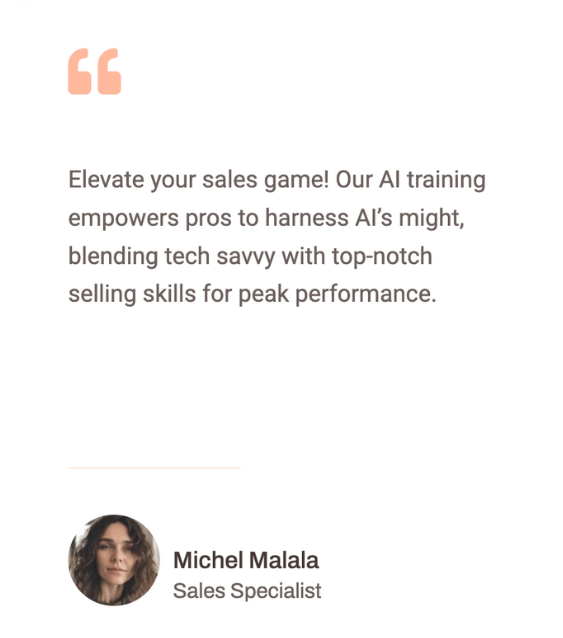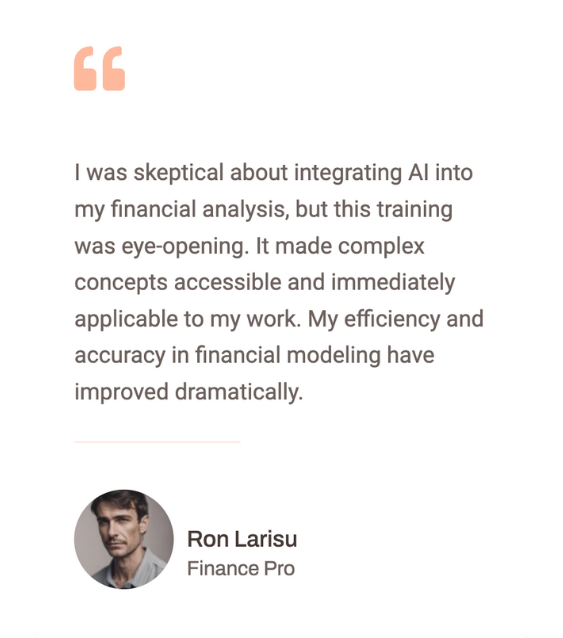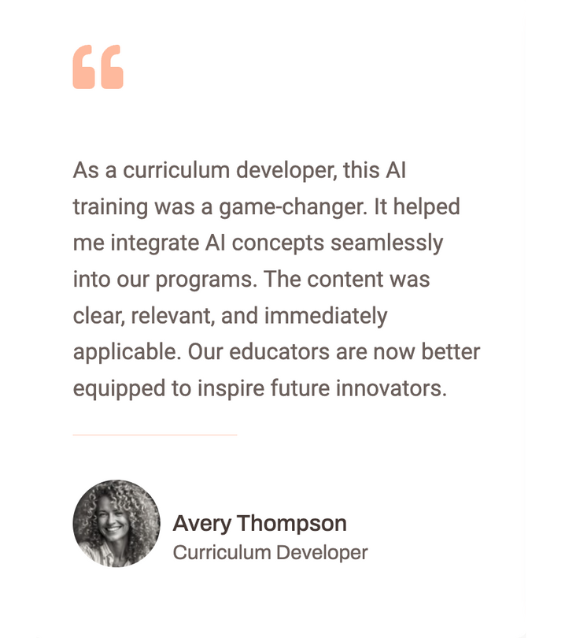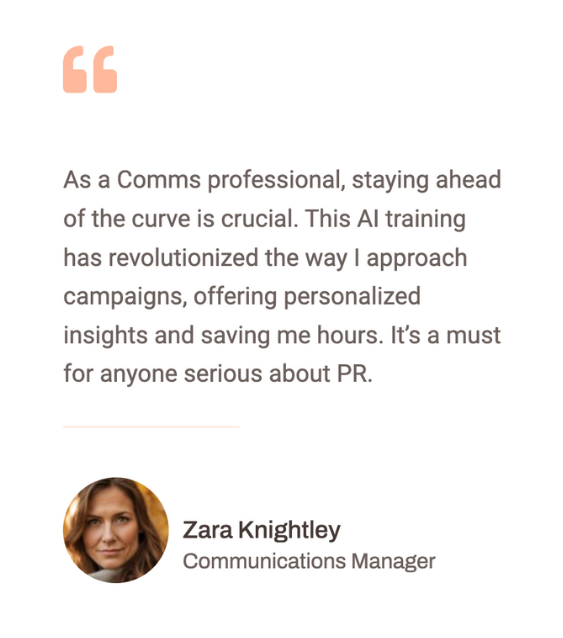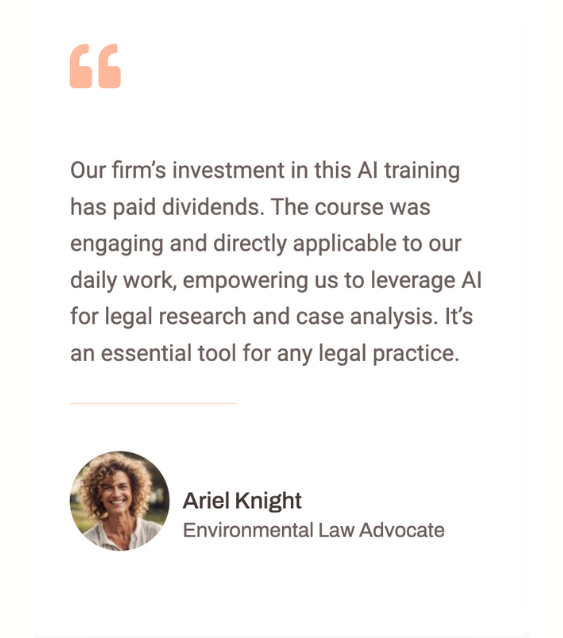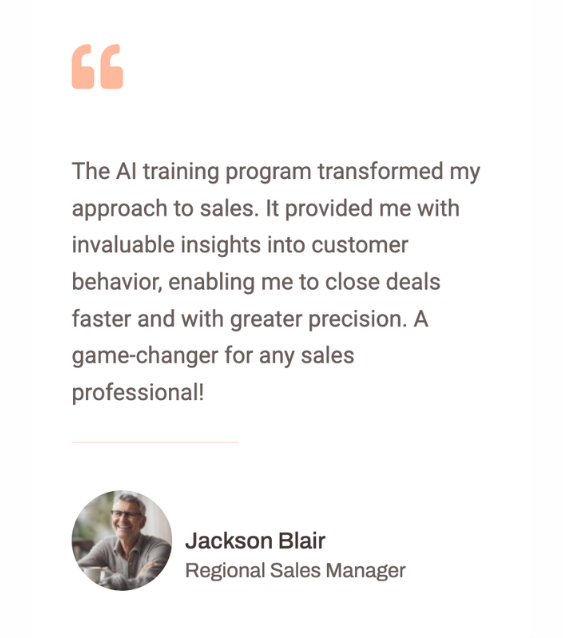Stanford CS230: AI Project Strategy - Speed, Data, Error Analysis (Video Course)
Ship AI projects faster with a clear, repeatable playbook. Learn daily iteration, dev-set-first metrics, rigorous error analysis, and data tactics,then apply them in a wake-word system and a researcher pipeline. Practical, honest, and immediately usable.
Related Certification: Certification in Accelerating AI Projects with Data Strategy and Error Analysis
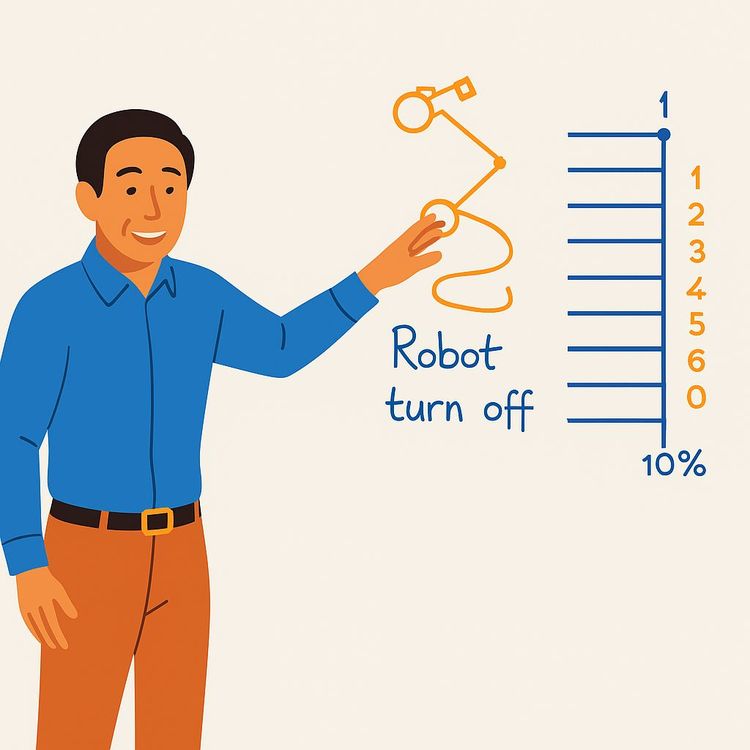
Also includes Access to All:
What You Will Learn
- Run a daily iteration loop to debug, test, and ship faster
- Define and freeze a representative dev set and metrics that reveal real failure modes
- Collect real data, synthesize targeted augmentations, and correct class imbalance
- Perform systematic error and ceiling analysis to prioritize pipeline fixes
- Design and deploy lightweight on-device wake-word models with low latency and controlled false positives
- Automate experiment tracking, versioning, and reproducible configs to compress iteration time
Study Guide
Stanford CS230 , Lecture 6: AI Project Strategy
You don't win AI projects with clever math alone. You win with speed, clarity, and a habit of fixing what matters next. That's what this learning guide is about: how to manage, diagnose, and iterate an AI project so it ships faster, performs better, and stays maintainable as it grows.
We'll go from zero to a complete strategy you can use today. You'll see how to build a wake-word detector for a smart lamp from scratch, then shift to a multi-step AI researcher pipeline and learn how to run disciplined error analysis. Along the way, we'll unpack the mindset, workflows, and practical decisions that separate highly productive teams from the ones that stall out. You'll learn to ground your choices in data, speed up your loop, and turn messy problems into clear, solvable tasks.
This isn't about theory for theory's sake. It's about what to do first, what to ignore, and how to keep your project moving even when there's uncertainty at every turn.
What You'll Learn and Why It's Valuable
After working through this guide, you'll be able to run AI projects like a pro. You'll know how to set up a daily iteration cadence, pick the right metrics, build datasets that actually work, and apply a rigorous error analysis to any pipeline. You'll also learn how to make fast decisions using broad research, expert feedback, and concrete experiments instead of opinions or hype.
Example 1:
You'll see how an imbalanced dataset can trick you with 97% accuracy and still be useless,and exactly how to fix it.
Example 2:
You'll follow a step-by-step process to isolate bottlenecks in a multi-model pipeline so you don't waste weeks tuning the wrong component.
The AI Development Mindset: Speed, Iteration, and Debugging
Here's the uncomfortable truth: most AI projects don't work on the first try. The teams that succeed treat development like an ongoing debugging loop. Train, inspect, fix one thing, repeat. The faster you cycle, the faster you learn, and the better your system gets.
10x Productivity Is Real
The difference between a skilled team and an average one often comes down to iteration speed. Small choices compound over weeks: how quickly you launch experiments, how precisely you interpret results, and how decisively you update your plan. A team with a tight loop can reach a strong prototype in the time another team spends debating architectures.
Development Feels Like Debugging
Traditional software gives you full control. AI doesn't. The data has surprises. The model hides failure modes. You can't predict exactly what will happen,so you get good at diagnosing what did happen and fixing that specific failure next.
The Daily Cadence That Works
Teams that move quickly live by a daily rhythm:
Night: kick off training jobs.
Morning: analyze results, do error analysis, and identify root causes.
Afternoon: implement fixes,collect data, tweak code, refine prompts, adjust loss functions.
Evening: launch the next experiment.
This gives you one complete learning cycle per day. If your model takes hours, you can keep this pace. If it takes weeks, you'll batch more analysis between runs and parallelize. Either way, the cadence is your backbone.
Two Examples of Iteration in Practice
Example A: You find the wake-word model is too sensitive to loud cafés. In the morning you spot the pattern; midday you synthesize noisy audio with the wake phrase; evening you launch a retrain with new negatives; next morning you retest.
Example B: The researcher agent produces fluffy summaries. After a spreadsheet review, you discover the URL selection step misses authoritative sources. You add a "domain authority" scoring rule and prompt the ranker to prefer .edu/.gov. Launch new runs by night.
Set Up Your Evaluation Backbone: Dev Set First
Your development set (dev set) and metric are your sanity checks. Without them, you'll chase ghosts. Establish them early. Use the dev set to make decisions. Only check the test set when you're confident you're truly ready.
How to Build a Good Dev Set
Represent your target distribution. Include edge cases. Label consistently. Don't make it too easy. Keep it stable so you can compare runs fairly.
Pick Metrics That Expose the Truth
Accuracy can lie on imbalanced data. Consider precision/recall, F1, ROC AUC, confusion matrices, and calibration. For wake word, false positives vs false negatives matter more than raw accuracy. For researcher pipelines, evaluate factuality, coverage, and citation quality.
Two Examples of Better Metrics
Example A: A wake-word system with 99% accuracy but a false positive rate of 5% will drive users crazy at night. You switch to tracking false positive rate per hour and miss rate at a fixed sensitivity threshold.
Example B: An AI researcher that writes fluent text might still hallucinate. You add a "supported claims" rate,percentage of statements that link back to a trusted source. Your weekly dashboard goes up only if supported claims improve.
Accelerating Knowledge: Broad Survey First, Then Depth
Don't get lost in one paper. Start broad. Skim many papers, repos, and posts. Find the patterns. Identify the few "big rocks" worth a deep read. Then,this is key,do some work before contacting an expert. You'll ask better questions and get better answers.
Practical Tactics
Scan 10-20 sources fast. Star the ones that repeat across citations. Compare baselines, datasets, and common tricks. Reproduce a minimal baseline locally. Then have a 15-minute chat with an expert,professor, industry researcher, or open-source maintainer,after you've tried something.
Two Examples of Using External Knowledge Well
Example A: For wake-word detection, your scan highlights small CNNs on MFCCs and lightweight transformers, plus tips on VAD integration. You prototype both and discover a tiny CNN meets latency and power requirements.
Example B: For retrieval pipelines, you find a pattern: query expansion plus reranking beats naive keyword search. You test a bi-encoder for recall and a cross-encoder for reranking. Performance jumps without custom training.
Data Strategy: Collect, Synthesize, and Fight Imbalance
Great data is the foundation. But in many projects, the data you want doesn't exist yet. That's normal. Build it fast, then augment it smartly.
Start With Real Data
Even a small collection of real samples gives you a clean baseline. It reduces unknowns and keeps you from blaming synthetic artifacts for model issues.
Synthesize Strategically
After your baseline, augment with synthetic data to explore conditions you can't easily capture: background noise, accents, rare edge cases, or adversarial scenarios. Be intentional about the distribution you create.
Deal With Imbalance Early
Skewed labels cause "accuracy illusions." Techniques that work:
Oversample positives or weight the loss for minority classes.
Adjust decision thresholds and monitor precision/recall.
Expand the positive labeling window to create more varied positives.
Add hard negatives to improve discrimination.
Two Examples of Smart Data Moves
Example A: Your wake-word model predicts "negative" for almost everything (high accuracy, useless behavior). You replicate positive windows, increase their loss weight, and add varied positives by labeling the half-second post-phrase as positive.
Example B: Your pipeline's summarizer fabricates numbers. You curate a dataset of paragraphs with numeric facts and add a rule-based evaluator that penalizes unsupported numbers during training or reinforcement-style fine-tuning.
Case Study 1: Build a Wake-Word Detection System (On-Device)
Objective
Create an on-device system that turns a smart lamp on when it hears "Robert turn on." No internet. Low power. Low latency.
Initial Strategy & Research
Survey broadly: trigger word detection, small-footprint audio models, MFCC-based pipelines, and edge-optimized architectures. Identify the architectures repeatedly recommended for embedded use.
Talk to an expert after your first prototypes. A short call can save days. Bring results, not hypotheticals.
Data Collection & First Failures
You record short audio clips from many speakers. You slice them into 1-second windows. Windows ending with the phrase are labeled 1 (positive); others are 0 (negative). You end up with an imbalanced dataset (like 1:30). A naive model achieves 97% by always predicting 0. It learned to ignore the phrase entirely.
Fix the Imbalance
Oversample or weight positives so the model "cares." Label a wider window around the phrase end,like the 0.5s after the phrase,to create more positive examples with slight variations. This gives the model more robustness to timing and pronunciation shifts.
Overfitting Shows Up
After fixing imbalance, training accuracy looks great, dev accuracy collapses. Classic overfitting. Your options:
Regularize (dropout, L2, early stopping).
Collect more data (best long-term fix).
Generate synthetic audio by overlaying clean wake-word recordings onto diverse background noises: AC hum, café chatter, traffic, keyboard clicks.
Include negative phrases,"condo," "Alicia," "robot",so the model doesn't become a speech detector. It must recognize the specific phrase.
Practical Pipeline for Audio Synthesis
1) Record clean phrases: "Robert turn on" from multiple speakers, microphones, and speaking styles.
2) Record or source background noise clips: rooms, cars, offices, parks, cafés.
3) Mix them: random SNRs, time offsets, tempo shifts, reverbs. Add both positives and phonetically similar negatives.
4) Label: auto-generate window labels from mix metadata.
Model and Deployment Considerations
Edge constraints matter. Focus on small models with minimal memory and low compute:
Use MFCCs or log-mel spectrograms, then a compact CNN or tiny transformer.
Quantize weights and prune redundant channels to shrink the footprint.
Keep latency below the human-perceptual threshold so it feels instant.
Track false positives per hour: one random trigger in the middle of the night ruins trust.
Two Examples to Cement the Workflow
Example A: The lamp triggers when the TV says "Robert." You add targeted negatives: TV clips, podcast snippets, similar names like "Roberto," and phrases like "Robert turn off." False positives drop immediately.
Example B: The lamp misses the phrase when whispered. You add whisper recordings, lower volume SNR mixes, and a data augmentation that simulates distance from the microphone. Miss rate on quiet phrases improves.
From Prototype to Robustness: Tips and Best Practices
Labeling Discipline
Consistent windowing rules. Document how you mark positives and near-positives. Inconsistency creates noise the model will happily memorize.
Latency and Power Budgets
Benchmark end-to-end. Measure CPU load spikes and memory usage. Ensure the model stays within the device's thermal and battery envelope.
On-Device Evaluation
Test on the real device in a real home. Room acoustics matter. You'll catch issues not visible in lab environments.
Two More Examples
Example A: The model performs well on your laptop but drops on-device. Profiling reveals denoising was disabled on the embedded pipeline. You enable a lightweight VAD stage and CPU usage remains acceptable.
Example B: Your dev set is mostly office recordings, but customers use it in kitchens. You add kitchen sounds,running water, plates clanking,and retrain. Real-world complaints disappear.
The AI Development Workflow: Your Daily Engine
Standard Daily Loop
Evening: queue experiments with clear names and versioned configs.
Morning: read automated summaries and charts; run error analysis on failures; update your plan.
Afternoon: implement the one change with the highest expected impact; prepare data and code.
Evening: launch again. Repeat.
Training Time Shapes Strategy
10 minutes per run: experiment liberally; bottleneck is your own analysis speed.
A few hours: one serious iteration per day; prioritize changes carefully.
Weeks: parallelize runs, perform deep error analysis between launches, and design ablations to extract maximum learning from each run.
Automation and Tracking
Log metrics, configs, seeds, git commit, dataset version. Automatically generate comparison plots. Without this, you'll forget what changed between "good run #7" and "good run #8."
Two Examples of Using Time Well
Example A: With 4-hour runs, you schedule three parallel experiments overnight: one with loss weighting, one with new negatives, one with threshold tuning. In the morning, you know which lever moved the needle.
Example B: With multi-week pretraining, you pause risky architecture changes and invest in a meticulous error taxonomy and oracle analyses so the next big run is a sure step forward.
Case Study 2: Build an AI Researcher Pipeline
Objective
Input a user's research query. Generate search terms, call a web search API, pick the best URLs, and synthesize a report from fetched pages.
Pipeline Architecture
1) Generate search terms with an LLM.
2) Call a search API with those terms.
3) From snippets and titles, pick URLs to fetch; prefer authority and relevance.
4) Read fetched content and write a well-structured report.
The Challenge: Where to Focus
In multi-component systems, guessing the bottleneck is expensive. You need error analysis. Otherwise, you'll polish a strong component while the weak link keeps dragging down the output.
Error Analysis Methodology
Build a spreadsheet of real queries where the final output is poor. For each, inspect every stage:
Were the generated search terms strong?
Did the search API return quality results?
Did URL selection favor trusted, relevant pages?
Did the writing reflect the sources accurately and fully?
Tally the errors by component. If most issues trace back to URL selection, you've found your priority.
Ceiling (Oracle) Analysis
Estimate the upper bound if you "pretend" one component is perfect. For example, manually pick the best sources and feed them to the writer. If the final report becomes excellent, the ceiling is high and URL selection is your true bottleneck.
Two Examples of Pinpointing Bottlenecks
Example A: You test perfect search terms (manually crafted) and see little improvement. Search terms aren't the issue. Then you manually choose the best URLs and quality jumps. URL selection is the fix.
Example B: You manually provide flawless sources, but the final report still contains unsupported claims. The writer needs a stricter prompt and citation enforcement.
Improving Each Pipeline Component
1) Generate Search Terms
Best practices: add query expansion, include synonyms and related technical terms, and tailor for intent (survey vs deep dive). Prompt the model to propose multiple variants and rationales.
Example A:
For "black hole research," generate variants like "observational studies," "gravitational waves," "accretion disk simulations."
Example B:
For "rent vs buy," include terms for "mortgage rates," "total cost of ownership," and "regional market analysis."
2) Web Search
Use multiple search endpoints if possible. Track coverage and overlap. Cache frequent queries. Log result quality and diversity.
Example A:
Compare results across two providers and measure how often each returns .gov or .edu sources.
Example B:
For niche topics, a specialized academic search API yields better primary sources than general engines.
3) Identify & Fetch URLs
Combine heuristics (domain authority, recency, author reputation) with LLM-based reasoning. Add a reranking model trained to prefer credible sources. Deduplicate domains and enforce diversity.
Example A:
Prefer NASA and university pages over personal blogs when both appear in the top 10 results.
Example B:
When the topic is policy, boost official agency pages and think-tank reports; downweight unverified forums.
4) Write the Report
Constrain the writer to cite every claim. Ask for sectioned structure, bullet-point evidence, and links. Penalize unsupported statements. Add a pass that verifies citations exist for each key claim.
Example A:
Prompt: "For each paragraph, list source URLs supporting each claim." Missing citations trigger a rewrite.
Example B:
Use a two-pass approach: draft summary, then a verification pass that flags ungrounded sentences and revises them with direct quotes.
Systematic Error Analysis: How To Do It Well
Build the Spreadsheet
Rows: failed user queries. Columns: search terms quality, search results quality, URL selection quality, writing quality, notes, and root cause. Manually grade each component. This is work, but it's the shortest path to truth.
Identify Hot Spots
After 50-100 failures, tally sources of error. Usually, one stage dominates. Fix that first. Rerun the analysis to confirm the improvement moved the needle.
Two Examples of Efficient Analysis
Example A: In health-related topics, URL selection picks SEO-laden sites over authoritative medical sources. You introduce a domain whitelist and a biomedical reranker. Quality jumps on the next evaluation run.
Example B: In technical queries, the writer condenses too aggressively and loses critical details. You adjust the prompt to preserve definitions, include equations as quotes, and cite figure captions explicitly.
Key Concepts & Terminology You'll Use
Wake Word / Trigger Word
A specific phrase that activates the system. On-device, always-on, and resource-limited contexts are common.
End-to-End System
A single model maps input to output without hand-engineered steps in between.
AI Pipeline / Cascade
Multiple specialized components chained together; the output of one becomes the input of the next.
Synthetic Data
Artificially generated or mixed data to expand diversity and cover missing cases.
Unbalanced Dataset
Highly skewed class distribution that can mislead simple metrics.
Overfitting
Great on training data, weak on new data. Signals: big train-dev gap.
Error Analysis
Manual review of failures to discover patterns and prioritize the next fix.
Common ML Problems and Practical Fixes
Imbalance: The Accuracy Trap
When positives are rare, a model can "win" by predicting negatives. Don't let that happen. Weight classes, oversample, engineer hard negatives, and track metrics that penalize false comfort.
Overfitting: The Memorization Problem
If the model nails the training set but stumbles on the dev set, simplify or regularize the model, add more data (real or synthetic), and diversify examples.
Data Mismatch: Wrong Distribution
Training and production differ. Your model behaves in the office, fails in kitchens. Fix the data distribution with targeted collection or augmentation, and monitor drift over time.
Two Examples for Each
Imbalance: (A) Wake word rarely occurs,loss weighting fixes it. (B) Fraud detection with few positive cases,use focal loss and targeted sampling.
Overfitting: (A) Small audio dataset,add noise, reverberation, and speed perturbation. (B) Text classifier memorizes author names,remove author metadata and add k-fold cross-validation.
Data Mismatch: (A) Microphone change in production,record with the new mic and fine-tune. (B) Web content format shifts,update HTML parsing and retrain the extractor with new templates.
Speed Is a Competitive Weapon
If your team cycles twice as fast, you learn twice as fast. Over months, that's not a small edge,it's a different trajectory. Build infrastructure and rituals that compress your loop: experiment queues, templated analyses, reproducible configs, and auto-reporting. Measure time-to-iteration as a core KPI.
Two Examples of Speed Compounding
Example A: A nightly suite trains three variants automatically and summarizes deltas in the morning. Discussion shifts from "what should we try?" to "which of these wins and why?"
Example B: A dev set-first culture prevents debates. If the metric goes up on the dev set, the change moves forward. If not, it doesn't. Simple rules reduce friction.
Principles Worth Remembering
"What drives performance is the team's ability to make efficient decisions,speeding up the loop creates massive productivity differences."
"Machine learning feels like debugging: build, fail, find the failure mode, fix, repeat."
"You don't always know what the data will give you,so build a process that turns uncertainty into learning."
"Error analysis is manual for a reason: you need to see what a human would do better than the system to plan the next fix."
Implications and Applications by Role
For Project & Team Leaders
Organize around a daily or weekly iteration cycle.
Budget time and people for data collection, labeling, and synthesis.
Require systematic error analysis for pipeline projects before investing in component fixes.
Reward learning from failed experiments. Every result is data.
For AI Engineers & Students
Diagnose before you optimize: imbalance, overfitting, or distribution mismatch? Then pick a standard fix.
Be hands-on with data. Augment, synthesize, and stress-test for edge cases.
Manually trace requests through pipelines. Build intuition by seeing each component's output.
For Educators & Curriculum Designers
Use real projects that force students to collect data and debug models.
Teach strategy and error analysis alongside algorithms.
Bring case studies that show process and decision-making, not just equations.
Action Items and Recommendations You Can Implement Now
1) Establish a Disciplined Iteration Cadence
Codify your loop. Automate where possible: pipeline runs, logging, and reports.
2) Conduct a Broad Initial Survey
Skim widely before committing. Reproduce a baseline fast, then go deep on the most promising ideas.
3) Implement Formal Error Analysis
Create a shared spreadsheet and review ritual. Grade each pipeline stage for failed cases.
4) Prioritize Data over Premature Optimization
If you see overfitting or brittle performance, get better data before exotic modeling tricks.
5) Build a Dev Set First Culture
Pin decisions to dev set performance. Freeze the dev set early and keep it representative.
Practice: Wake-Word Deep Dive (Hands-On Thought Process)
Scenario: Works in quiet rooms, fails in cafés
Step 1: Replicate the issue with controlled noisy mixes (café noise at varied SNRs).
Step 2: Error analysis by condition: which noises break it? Speech babble? Clinking dishes?
Step 3: Data fix: synthesize mixes with targeted café sounds plus similar-sounding negatives.
Step 4: Model fix: regularize, maybe add a small attention layer for robustness to background speech.
Step 5: Threshold tuning: optimize for lower false positives in noisy environments while keeping misses acceptable.
Step 6: On-device test: evaluate in real cafés with the actual mic and processing chain.
Two Additional Situations and Fixes
Example A: False triggers from smart TV ads. Add ad audio to hard negatives, add a keyword confusion set, and require phrase completion before action.
Example B: Misses from accented speech. Expand speaker diversity, include accent-focused augmentations, and use phoneme-aware training examples.
Practice: Researcher Pipeline Improvement (Hands-On Thought Process)
Scenario: 70% of errors come from URL selection
Strategy 1: Add authority heuristics (domain whitelists, author credentials) plus a reranker fine-tuned on "credible vs not credible."
Strategy 2: Prompt the selector to produce evidence for each chosen URL ("why this over that?") and penalize weak rationales.
Strategy 3: Force diversity: at least one primary source, one review article, and one news explainer when relevant.
Two More Scenarios
Example A: Search terms are too generic. Prompt the LLM to generate three intent-specific variants (survey, tutorial, state-of-the-art) and test all.
Example B: The writer hallucinates details. Add a verification pass that flags any claim without a citation and requires a rewrite that quotes or links the precise source segment.
Study Guide: Learning Objectives You'll Hit
You'll understand the iterative, empirical nature of AI development; learn how to research efficiently; weigh real vs synthetic data; handle imbalance and overfitting; implement a disciplined improvement cycle; run systematic error analysis on pipelines; and see how speed translates into an advantage that compounds.
Study Guide: Additional Concepts in Context
End-to-End vs Pipeline Trade-offs
End-to-end is simpler operationally but harder to debug. Pipelines are modular and diagnosable but require careful interfaces and evaluation at each stage.
Cost-Sensitive Learning
If missing a wake word is worse than a false trigger (or vice versa), encode that in the loss and thresholds. Your metric should match the real cost surface.
Two Examples of Choosing the Right Approach
Example A: For speech wake word, a small, specialized detector beats general speech-to-text for latency, power, and privacy.
Example B: For research, a modular pipeline wins because you can upgrade retrieval, ranking, or summarization independently and debug them cleanly.
Practice Questions
Multiple Choice
1) You train a wake-word detector with 99% training accuracy and 55% dev accuracy. What's most likely?
a) Unbalanced dataset
b) Overfitting to training data
c) Learning rate too high
d) Model not powerful enough
2) In a complex pipeline, how do you decide which component to improve first?
a) Team vote
b) Systematic error analysis on failed examples to locate the dominant failure source
c) Always improve the first component
d) User survey only
3) Why collect a small set of real data before large-scale synthetic?
a) It's always cheaper
b) It provides a clean baseline and removes synthetic artifacts as a confounder early
c) Synthetic data can't train neural nets
d) Real data is always more diverse
Short Answer
1) Describe pros/cons of synthetic data for audio models.
2) Explain a daily iteration cycle when training takes four hours.
3) How does your strategy change when training time grows from minutes to weeks?
Discussion
1) Your wake-word model fails in noisy cafés. Outline your diagnosis and fix plan using the steps in this guide.
2) Your error analysis shows 70% of failures come from poor URL selection. Propose three distinct strategies to improve it.
Additional Resources for Going Deeper
Transfer Learning & Fine-Tuning
Use pre-trained audio or language models to speed up training and perform better on small datasets.
Data Augmentation
Automate diversity for images, audio, and text; focus on realistic variations that mirror production.
Cost-Sensitive Learning
Adjust your loss to reflect real costs of errors, especially on imbalanced tasks.
Agent Architectures
Explore designs that let systems decide next actions dynamically rather than linearly.
MLOps
Learn how to build, deploy, and maintain ML systems with reproducibility, monitoring, and continuous improvement.
Execution Tips That Save Time
Experiment Hygiene
Version everything. One config file per run. Seeds fixed when you compare. Write down a brief hypothesis before each experiment so you know what you expected,and what you learned.
Early Smoke Tests
Run tiny experiments on a small slice to catch obvious failure modes before paying the full training cost.
Ablations
When you get a win, remove pieces one by one to see which change actually helped. Keep only the effective parts.
Two Examples of Lean Execution
Example A: You create a "10-minute smoke run" that completes the entire training loop on a toy subset. It catches broken labels instantly.
Example B: You build an auto-report that flags statistically insignificant improvements so you don't chase noise.
Putting It All Together: End-to-End Strategy Recap
Start Broad, Then Focus
Scan the field, build a baseline, talk to experts with data in hand.
Dev Set First
Lock a representative dev set; define metrics that reflect reality.
Iterate Daily
Automate the loop; ship one improvement per day where possible.
Data Is an Engineering Problem
Collect, clean, and synthesize with intention; fight imbalance and mismatch early.
Error Analysis Guides Investment
In pipelines, locate the dominant failure, then fix that first. Use ceiling analysis to estimate payoffs.
Speed Compounds
Structure and tools that halve iteration time double your learning rate.
Verification: Coverage of the Core Points
We've covered the AI mindset (speed, iteration, debugging); the daily cadence and how training time affects strategy; a full wake-word case study including research, data collection, imbalance, overfitting, and synthetic data with negative phrases; a multi-component researcher pipeline with architecture, disciplined error analysis, and ceiling analysis; the key insights and takeaways; quotes distilled into principles; role-specific applications; action items (cadence, broad survey, formal error analysis, data-first, dev set culture); and additional practice and resources. Each major concept included concrete examples,often more than two,to anchor the ideas.
Conclusion: Build What Works, Faster
The best AI teams aren't the ones with the flashiest models,they're the ones with a reliable rhythm. They run one tight loop, every day: try something, learn from it, fix the right thing, and repeat. They treat data like engineering, not an afterthought. They measure what matters. They use error analysis to focus effort where it counts. And they move fast without breaking their own feedback loop.
Whether you're building a tiny on-device wake-word system or a multi-step researcher pipeline, the same strategy applies. Start broad, set a clear dev set and metric, iterate with intention, and let the data tell you where to go next. Do that with discipline, and you'll turn uncertainty into progress,one cycle at a time.
Frequently Asked Questions
This FAQ exists to answer the most common, practical questions about AI project strategy from kickoff to deployment. It groups insights by topic, progresses from basics to advanced practice, and focuses on decisions that speed up delivery and improve outcomes. Each answer highlights key points and includes real-world examples wherever useful.
Getting Started with an AI Project
What is the single most important factor for success in an AI project?
Key points:
- Iteration speed beats theory when shipping real systems
- Tight build-measure-learn loops create compounding advantage
- Error analysis guides the next best move
Speed of learning is the strongest predictor of success. Teams that quickly ship a baseline, analyze what's wrong, and act on data improve fast. That doesn't dismiss algorithms; it prioritizes execution. A skilled team can deliver in weeks what slower teams take many months to build because they compress decision cycles: tune, collect targeted data, run clean experiments, and repeat.
Example: Two teams build a wake-word detector. Team A runs one solid experiment per day and fixes one issue daily (class skew, noise, thresholds, on-device latency). Team B debates architectures for a week before testing. After a month, Team A has a reliable, shippable model; Team B is still theorizing. Prioritize short feedback loops, disciplined error analysis, and unblocked engineering flow.
When starting a brand-new AI project, what are the first steps?
Key points:
- Ship a thin-slice baseline fast
- Skim broadly, then go deep on a few high-signal sources
- Talk to experts after you've done homework
Build a simple, end-to-end version in days, not weeks. In parallel, run a quick research pass: skim many papers, posts, and repos to map common approaches and pitfalls; then deep-read the two or three resources that look most relevant. After that, schedule short conversations with practitioners who've shipped similar systems,they'll point out traps you haven't seen and shortcuts you can validate.
Example: For a wake-word model, clone a small CNN/TinyConv repo, swap in your data, and get something predicting within a day. While training, skim 10-15 posts/papers, pick the best two to study, and message one expert with your draft plan and specific questions. Momentum plus targeted guidance saves weeks.
What is the most effective way to conduct a literature search?
Key points:
- Go breadth-first, then depth where it matters
- Build a quick map of approaches and trade-offs
- Avoid anchoring on the first paper you read
Skim widely to identify patterns: architectures people keep using, datasets, metrics, known failure modes, and open-source baselines. From that map, select a few high-signal sources for deep reading. This prevents wasting time on a suboptimal path. Keep notes on: assumptions (data availability, compute), reproducibility (code, weights), and evaluation relevance to your use case.
Example: For an AI research agent, scan multiple retrieval-augmented and agent frameworks, compare how they rank sources, and note evaluation setups. Then deep-dive the top two that align with your constraints. Broad scan first, targeted depth second, fast prototype third.
Data Collection and Management
What should you do if your project requires a dataset that doesn't publicly exist?
Key points:
- Start with small, real data you control
- Collect with consent and simple protocols
- Use synthetic later to scale and diversify
If the dataset doesn't exist, create it,simply and quickly. For a wake-word like "Robert, turn on," record volunteers with clear consent. A single day of scrappy collection can generate enough to train a baseline and run error analysis. Real data reduces unknowns when debugging early models.
Example: Record 50 people on different phones, rooms, and distances from the mic. Label a small slice carefully, train a basic model, and inspect failures. Once you see patterns (e.g., background café noise), design targeted synthetic data and augmentations to cover those gaps. Real data first, synthetic after the baseline works.
What is the role of the development (dev) set, and is a test set always mandatory?
Key points:
- Dev set is your day-to-day truth for iteration
- Test set is for unbiased final reporting
- Shipping products can start without a test set,research cannot
Use the dev set to compare models and tune hyperparameters. For product work, especially early, you can tune to dev and ship if outcomes are clear and the business impact is measured in production. For research and claims of generalization, an untouched test set is essential.
Example: A startup shipping a wake-word lamp may rely on a robust dev set and strong production monitoring. A published benchmark or partnership requires a separate test set for credible numbers. Pick the split strategy that fits your goal, but keep the dev set clean and stable.
Should synthetic data be the first choice for building a dataset?
Key points:
- Synthetic adds variables and bias if used too early
- Start with a real-data baseline to isolate issues
- Use synthetic to scale after you know gaps
Synthetic data can be powerful, but it introduces uncertainty: did the model fail, or did your generator distort reality? Begin with a small, clean real dataset to establish a baseline and identify weaknesses. Then add synthetic examples to intentionally cover scenarios you lack.
Example: For self-driving perception, game-engine cars may lack the diversity of real vehicles or lighting. Train on limited real footage first, then add simulations for rare events (e.g., unusual angles, weather). Baseline with reality; scale with synthetic,on purpose.
What is a practical technique for creating a labeled dataset from raw audio recordings?
Key points:
- Slice long audio into overlapping windows
- Label positives at the phrase endpoint
- Multiply training data without over-collecting
Record longer clips that contain the target phrase once, then create many 1-second overlapping windows. Label a window positive if it ends where the phrase ends; otherwise negative. This yields dozens of supervised examples from a single recording and preserves temporal context.
Example: A 10-second clip with one "Robert, turn on" can produce multiple windows around the phrase endpoint for positives and the rest as negatives. You can vary window offsets slightly to create augmented positives without fabricating speech. Smart slicing turns scarce audio into a rich training set.
Troubleshooting and The Iterative Cycle
My model achieved high accuracy (e.g., 97%) but it doesn't work in practice. Why?
Key points:
- Accuracy hides class imbalance failures
- Always inspect confusion matrix and per-class metrics
- Choose metrics that match business risk
On skewed data, a model can "win" by predicting the majority class. If positives are rare, predicting "negative" always yields high accuracy but zero utility. Instead, look at precision, recall, F1, and ROC/PR curves, and evaluate on use-case-specific costs.
Example: A wake-word detector that rarely fires avoids false alarms but never turns on the lamp. That's useless, even with 97% accuracy. Use metrics that expose the trade-offs you actually care about.
How can I fix a model that is suffering from a skewed dataset?
Key points:
- Rebalance via upsampling, weighting, or downsampling
- Augment positives to expand diversity
- Monitor precision-recall trade-offs as you balance
Increase the visibility of the minority class: duplicate positives, weight the loss to penalize false negatives, or reduce negatives. Augment positives to avoid overfitting duplicates (e.g., slight time shifts or gain changes for audio). Validate changes on a balanced dev set and choose thresholds aligned to business costs.
Example: For "Robert, turn on," widen the positive window slightly so timing jitter doesn't cause misses, and weight positives higher in the loss. Track recall gains while keeping false positives acceptable. Rebalance training and revisit thresholds,not just the dataset.
My model performs well on the training set but poorly on the dev set. What is happening?
Key points:
- That's overfitting: memorization over generalization
- Reduce capacity or regularize; add data where it matters
- Check for train-dev distribution mismatch
Overfitting happens when the model learns noise or specifics of the training set. Apply regularization (L2, dropout, early stopping), simplify the model, or add more and more varied data. Also validate that your dev set matches production conditions; otherwise, you're testing a different problem.
Example: A small wake-word model trained only on quiet-room audio will crumble in a café. Balance your dev set across real environments and re-train with noise augmentations. Fix capacity, data diversity, and distribution alignment together.
What are the primary ways to combat overfitting?
Key points:
- Regularize, simplify, and early stop
- Add data or augment meaningfully
- Validate on a stable, representative dev set
Start with regularization (L2, dropout) and early stopping on dev loss. If the model is too expressive for the data, reduce layers/width. Then expand data: collect more real samples or use augmentations that reflect real variation (not random distortions). Finally, confirm that your dev set reflects production.
Example: For audio, add realistic noise, time shifts, and volume changes; for images, use flips and lighting changes that match user settings. Control complexity and increase meaningful data variety.
How can I use data synthesis to create a large, diverse audio dataset?
Key points:
- Mix clean speech with diverse background noise
- Generate positives with target phrase; negatives with other words
- Match real acoustic conditions and devices
Superpose clean voice clips onto background noise to recreate real environments. Produce positives by mixing "Robert, turn on" into noise at varying SNRs and positions; produce negatives with other words or silence. Include device effects (phone vs. mic), room acoustics, and distances.
Example: Create a mixer that randomly samples a noise clip (café, AC hum, street), picks an SNR, inserts the phrase at a random time, and exports labeled windows. Validate against real café recordings to ensure the mix sounds natural. Use synthesis to target gaps you've observed.
What is an effective daily workflow for an AI team to ensure rapid iteration?
Key points:
- One disciplined experiment per day (if runs take hours)
- Morning: analyze; afternoon: fix; evening: launch
- Track results and decisions visibly
Adopt a 24-hour cadence: queue training overnight, analyze results in the morning, implement fixes in the afternoon, and kick off the next run in the evening. Maintain a shared experiment log with hypotheses, configs, metrics, and outcomes. Always end the morning with a single prioritized issue to fix.
Example: Monday: address class imbalance. Tuesday: improve noise robustness. Wednesday: calibrate thresholds. Thursday: compress for edge. Friday: on-device tests with real users. Cadence beats bursts,focus on one meaningful fix per cycle.
Managing Complex AI Pipelines
What is an AI pipeline?
Key points:
- Multiple components in sequence; each solves a subtask
- Enables modular debugging and targeted upgrades
- Trade-offs vs. end-to-end models depend on observability and data scale
An AI pipeline strings specialized components together (e.g., query generation → search → filtering → synthesis). It's ideal when you need observability, domain rules, or different models for different steps. The alternative,end-to-end,trades observability for potential simplicity and scaling with huge datasets.
Example: An AI research assistant might use one LLM to generate queries, a search API to fetch results, another LLM to rank sources, and a final LLM to draft a report. Use pipelines when you need control and clear error boundaries.
What is error analysis and why is it essential for improving AI pipelines?
Key points:
- It isolates which component fails most
- Prevents wasting time optimizing the wrong step
- Turns opinions into measurable priorities
Error analysis means manually inspecting failed outputs and labeling which component caused the failure. In pipelines, this prevents "shotgun debugging" and directs effort to the true bottleneck. A component causing 70% of failures gets priority, even if it's not the most fun to optimize.
Example: If an agent consistently picks weak URLs despite good search results, fix ranking/fetching logic before tuning the final writing stage. Count failure sources and attack the hotspot.
Certification
About the Certification
Get certified in AI Project Strategy: Speed, Data, Error Analysis. Prove you can iterate daily, set dev-set-first metrics, run error analysis, fix data, and ship faster, e.g., a wake-word system and a lean researcher pipeline.
Official Certification
Upon successful completion of the "Certification in Accelerating AI Projects with Data Strategy and Error Analysis", you will receive a verifiable digital certificate. This certificate demonstrates your expertise in the subject matter covered in this course.
Benefits of Certification
- Enhance your professional credibility and stand out in the job market.
- Validate your skills and knowledge in cutting-edge AI technologies.
- Unlock new career opportunities in the rapidly growing AI field.
- Share your achievement on your resume, LinkedIn, and other professional platforms.
How to complete your certification successfully?
To earn your certification, you’ll need to complete all video lessons, study the guide carefully, and review the FAQ. After that, you’ll be prepared to pass the certification requirements.
Join 20,000+ Professionals, Using AI to transform their Careers
Join professionals who didn’t just adapt, they thrived. You can too, with AI training designed for your job.

